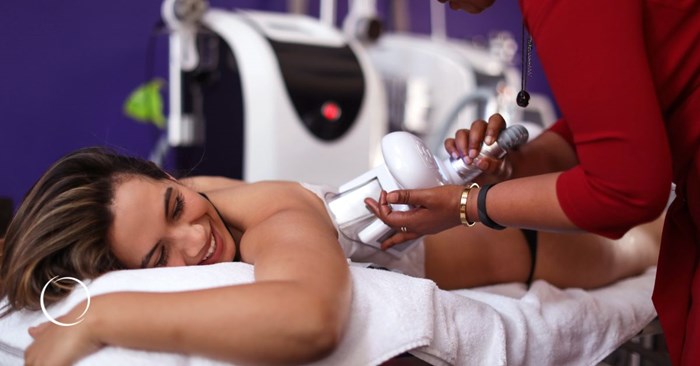How plastic surgeons treat fat-freezing injuries

Paradoxical adipose hyperplasia (PAH) is a rare and somewhat ironic condition that can happen after undergoing CoolSculpting treatments – a popular nonsurgical fat reduction procedure that freezes fat cells that are later flushed out of the body naturally. With PAH, instead of shrinking, the fat cells in the treated area grow larger, causing noticeable, firm masses under the skin. It's paradoxical because you opt for a treatment to decrease fat, only to end up with more of it in the areas you want to slim down.
ASPS Member Surgeon Christopher Funderburk, MD, has become a go-to plastic surgeon for people with fat-freezing injuries and said he has a steady influx of PAH patients who find him through online support groups. We sat down with Dr. Funderburk for his expertise in treating this baffling phenomenon that affects less than one percent of CoolSculpting patients but, when it does, causes not just disfigurement but also considerable emotional distress.
ASPS: When did you first start treating patients with PAH and how has your practice grown since?
Dr. Funderburk: The first was around 2020, and, then around 2021, our patient population exploded with the rise of online support groups. Through word of mouth, we were able to get referrals. This week, I've seen patients in virtual consultations from California, the Midwest, Florida and North Carolina. They come from all over.
ASPS: Is the word now out about PAH so more patients can get properly diagnosed?
Dr. Funderburk: Fortunately, we've had ladies like Linda Evangelista come forward with their stories, so people are more aware. But prior to that, patients were going back to the med spa saying, "Look, this area that you treated is enlarged." They were just told that they put on weight or didn't do their required upkeep and were basically just sent away.
ASPS: Has a patient ever told you they got CoolSculpting to look better but ended up looking and feeling worse?
Dr. Funderburk: Absolutely. In so many of these consultations, the patients are very tearful because of what they've gone through – both because they've been disfigured and also because a lot of them have had the runaround from the med spas as far as diagnosing their condition. So, when they come in, they're just happy to meet somebody who is familiar with the condition, who has treated other people with it and just to know that there's hope for fixing it.
ASPS: How do you treat patients who have a fat-freezing injury?
Dr. Funderburk: We'll first use VASER, an ultrasound device to help break down some of the injured tissue. Then, we'll follow that with power-assisted liposuction. Sometimes, we must remove excess skin with a tummy tuck, arm lift, etc., if the weight gain from the expanded fat cells has caused considerable skin laxity.
ASPS: Does this completely remove the injured fat cells?
Dr. Funderburk: We break down the tissue and remove as much as possible, but we know that we're not removing all the cells. There are still some that are going to remain. That's one thing we always have to tell our patients when we're treating them – some of these abnormal cells will still be in their bodies. We hope that we've removed a sufficient amount of them to make a substantial difference, and, hopefully, the fat cells will no longer behave abnormally in the future, but we always warn patients that it's possible later down the road that there could again be a growth of this tissue and necessitate a second surgery.
ASPS: What impact does your treatment have on PAH patients emotionally?
Dr. Funderburk: It's like night and day when we see them back at their follow-ups because when we first meet them, they're very anxious, depressed and scared.
ASPS: How do patients feel toward you for diagnosing and treating their fat-freezing injury?
Dr. Funderburk: Our PAH patients are thankful to be seen, heard and listened to because they've often been put through the wringer. We have a nice community of patients here. Just about every week, we get a very nice gift from a PAH patient – some flowers, some food, bottles of wine.
ASPS: Moving into the future, are you involved in any research focusing on PAH?
Dr. Funderburk: We're very fortunate that we have treated a large number of cases here. Now, we're working on compiling those cases, examining the treatments we've provided and assessing their efficacy. We're also determining how many cases are resolved with energy-based liposuction and how many seem to require more extensive incisional procedures.
In the long term, we're following these patients to see if there are any cases of recurrence or regrowth of the tissue. We haven't had very many cases of recurrence after treatment, but we always let patients know that is a possibility since we don't fully understand the physiology of paradoxical adipose hyperplasia.
To find a qualified plastic surgeon for any cosmetic or reconstructive procedure, consult a member of the American Society of Plastic Surgeons. All ASPS members are board certified by the American Board of Plastic Surgery, have completed an accredited plastic surgery training program, practice in accredited facilities and follow strict standards of safety and ethics. Find an ASPS member in your area.
